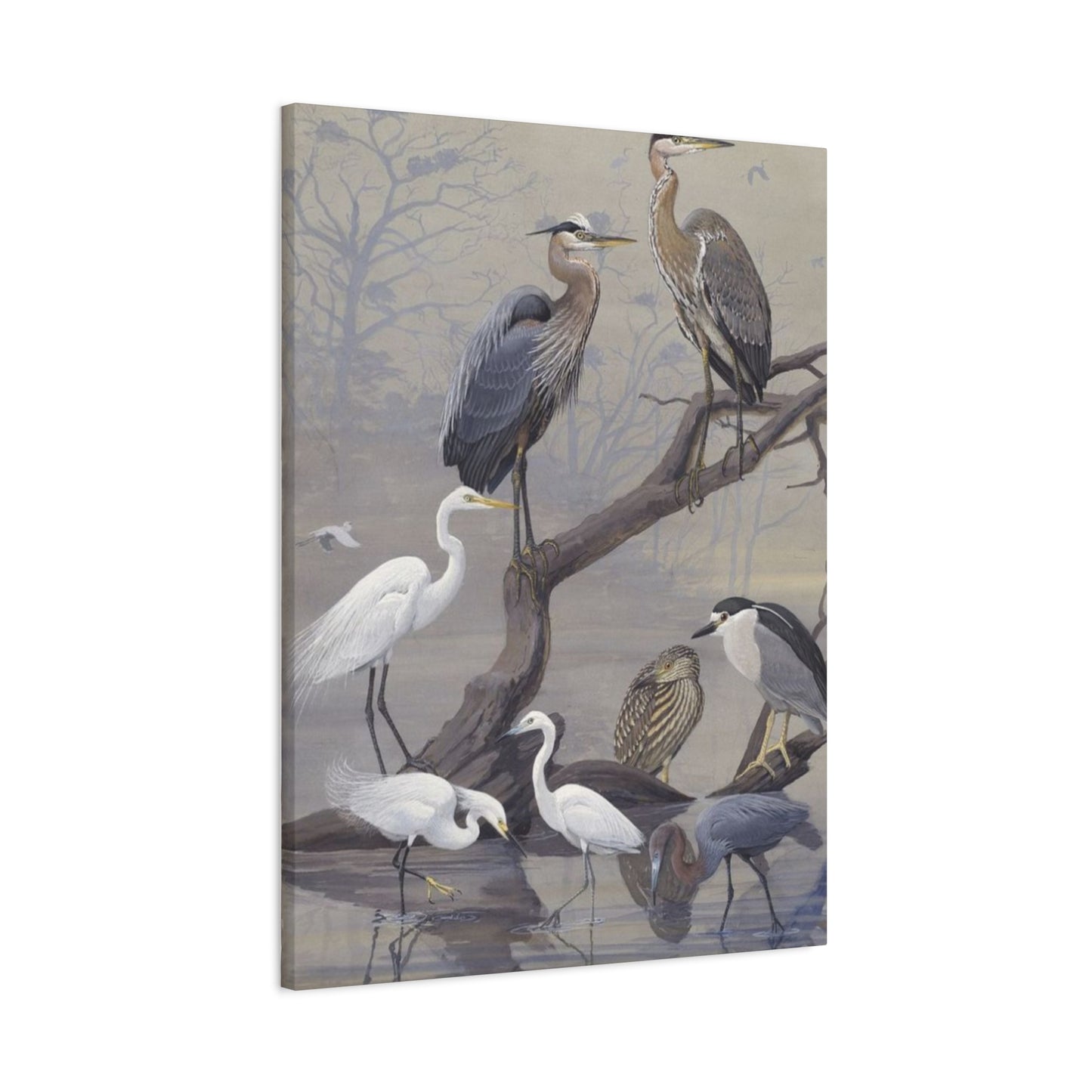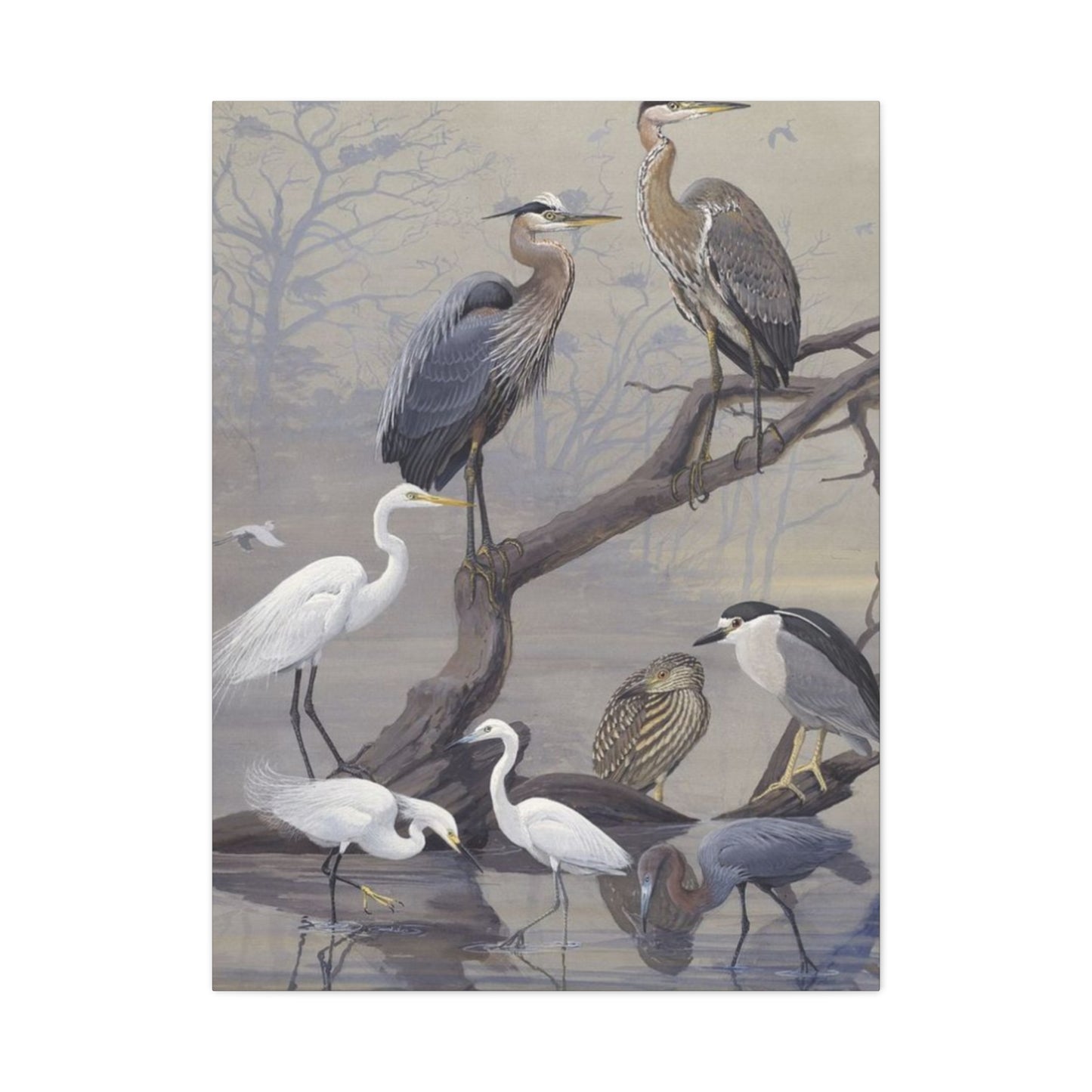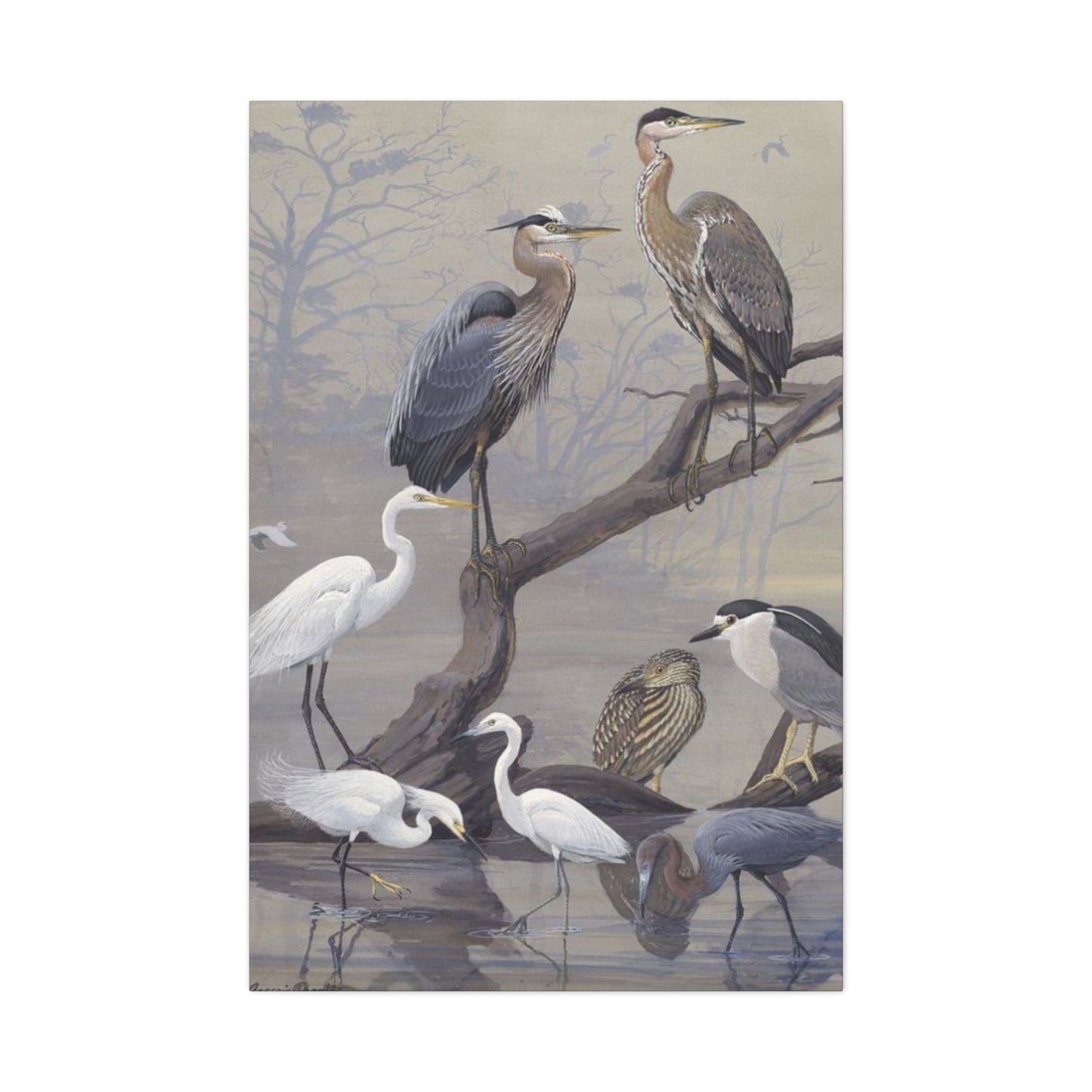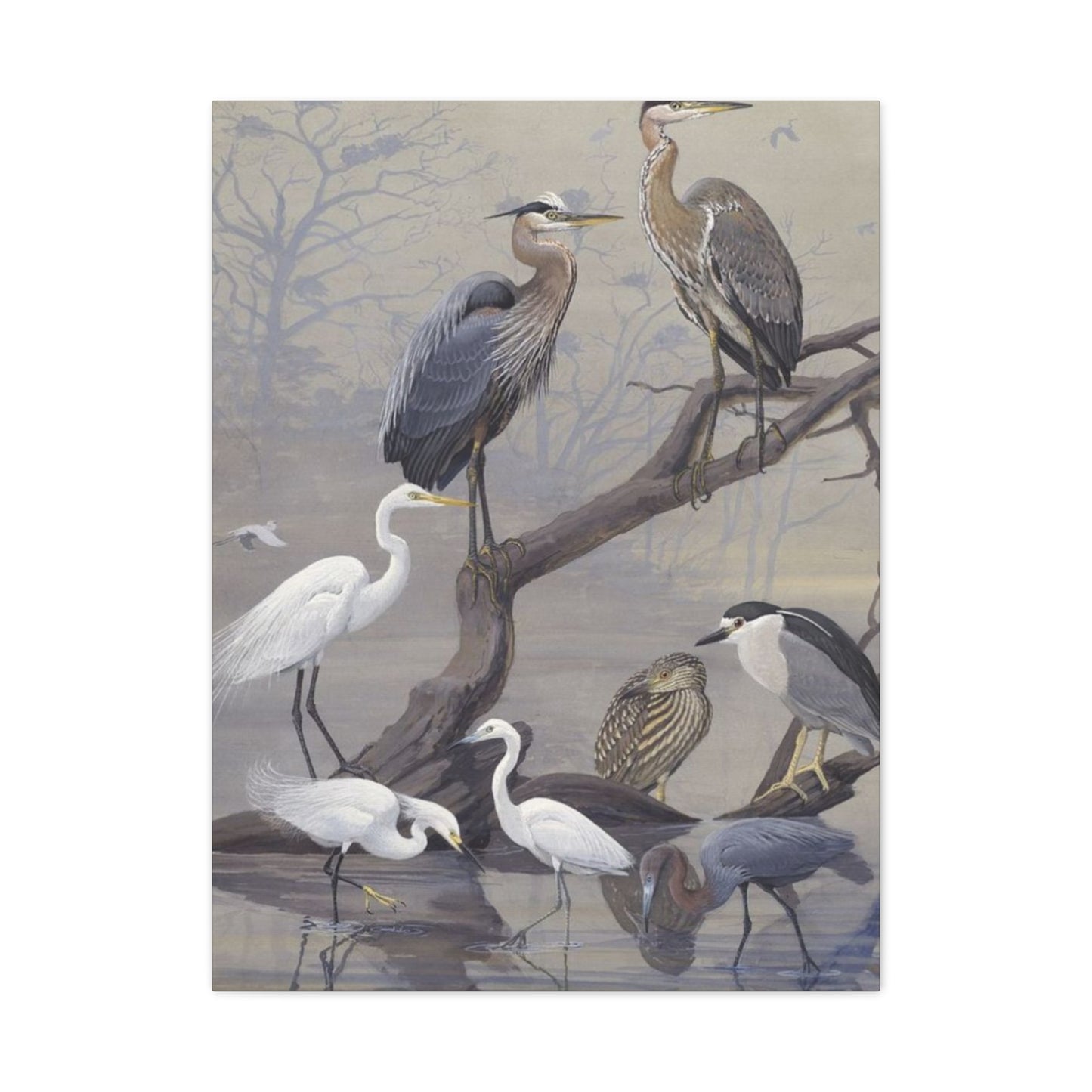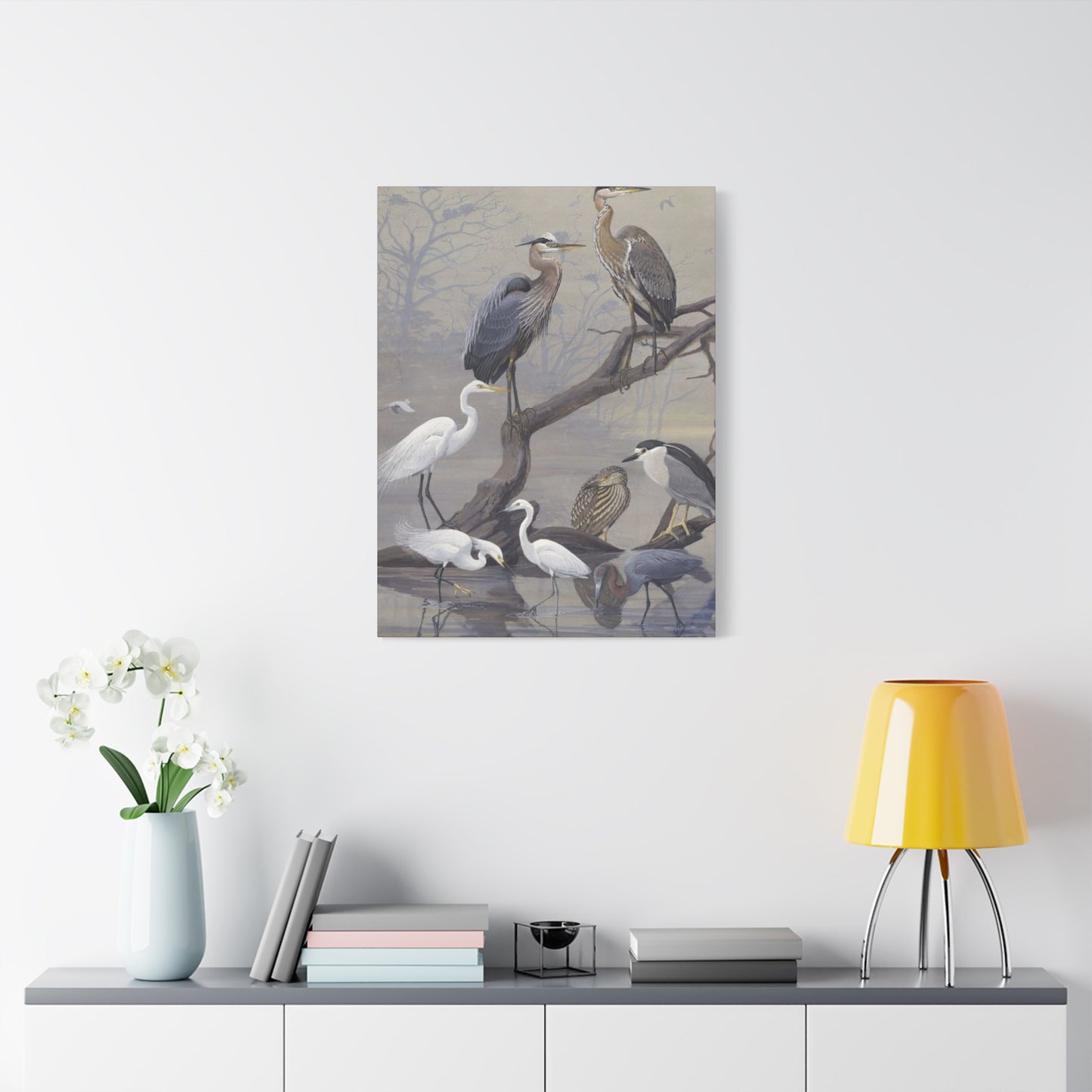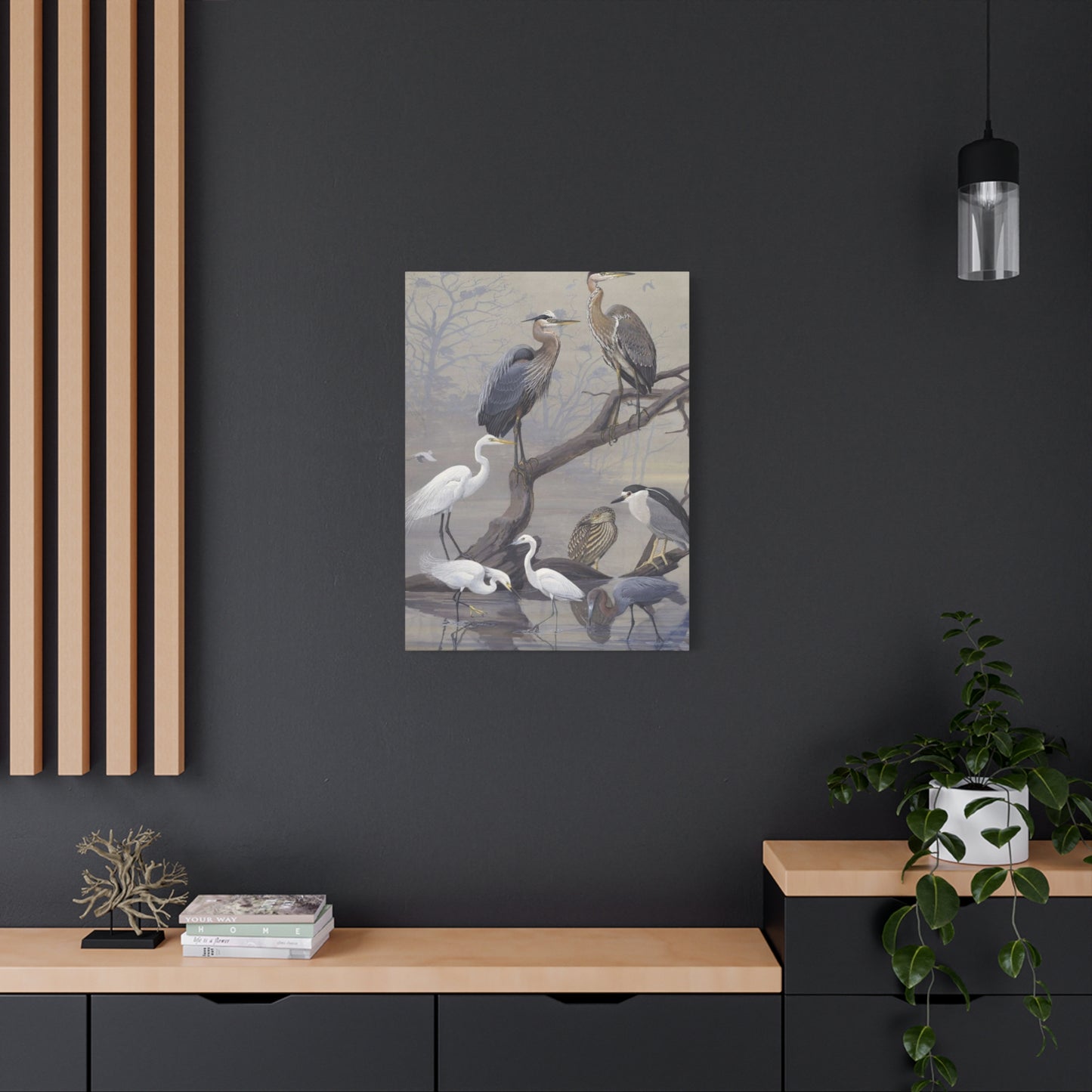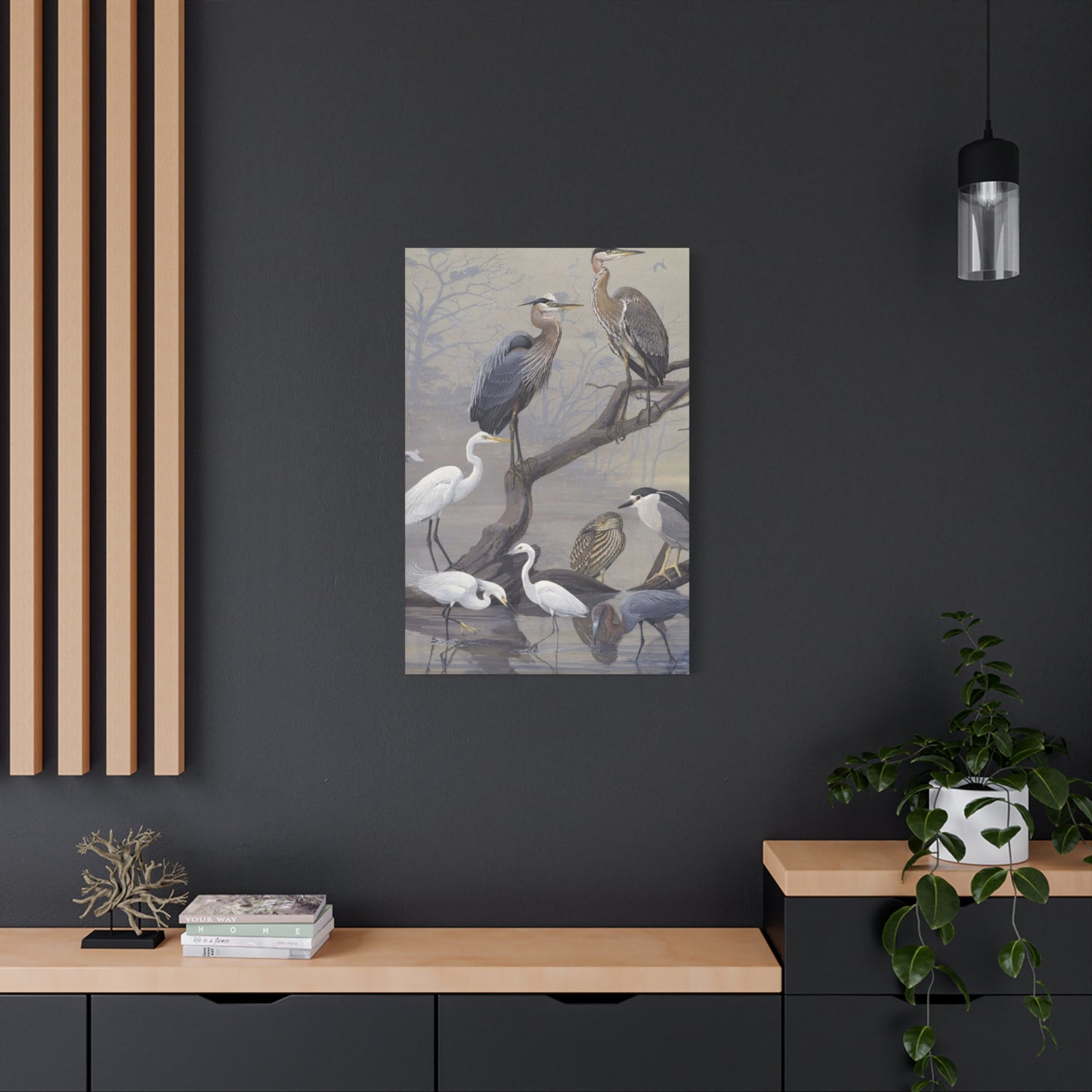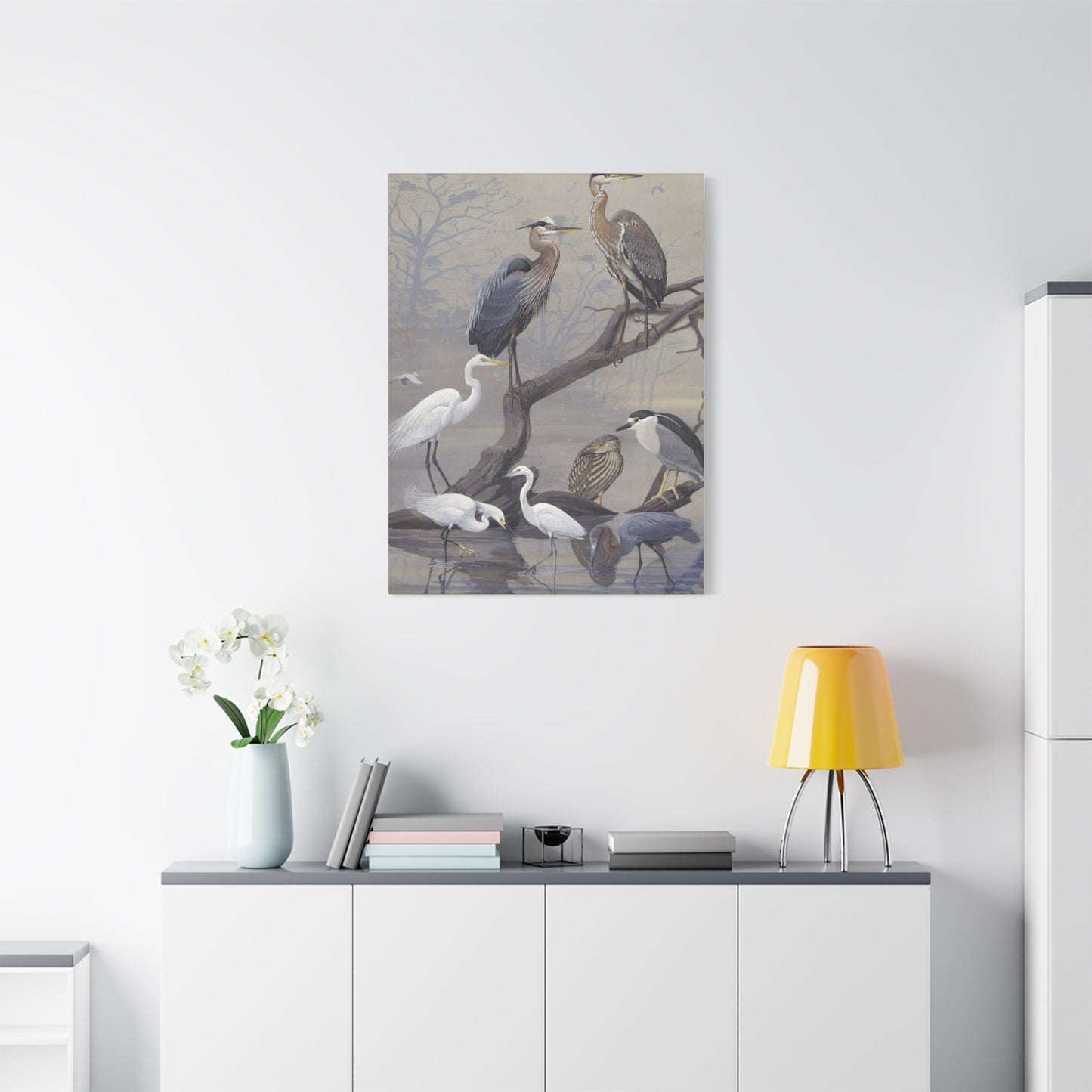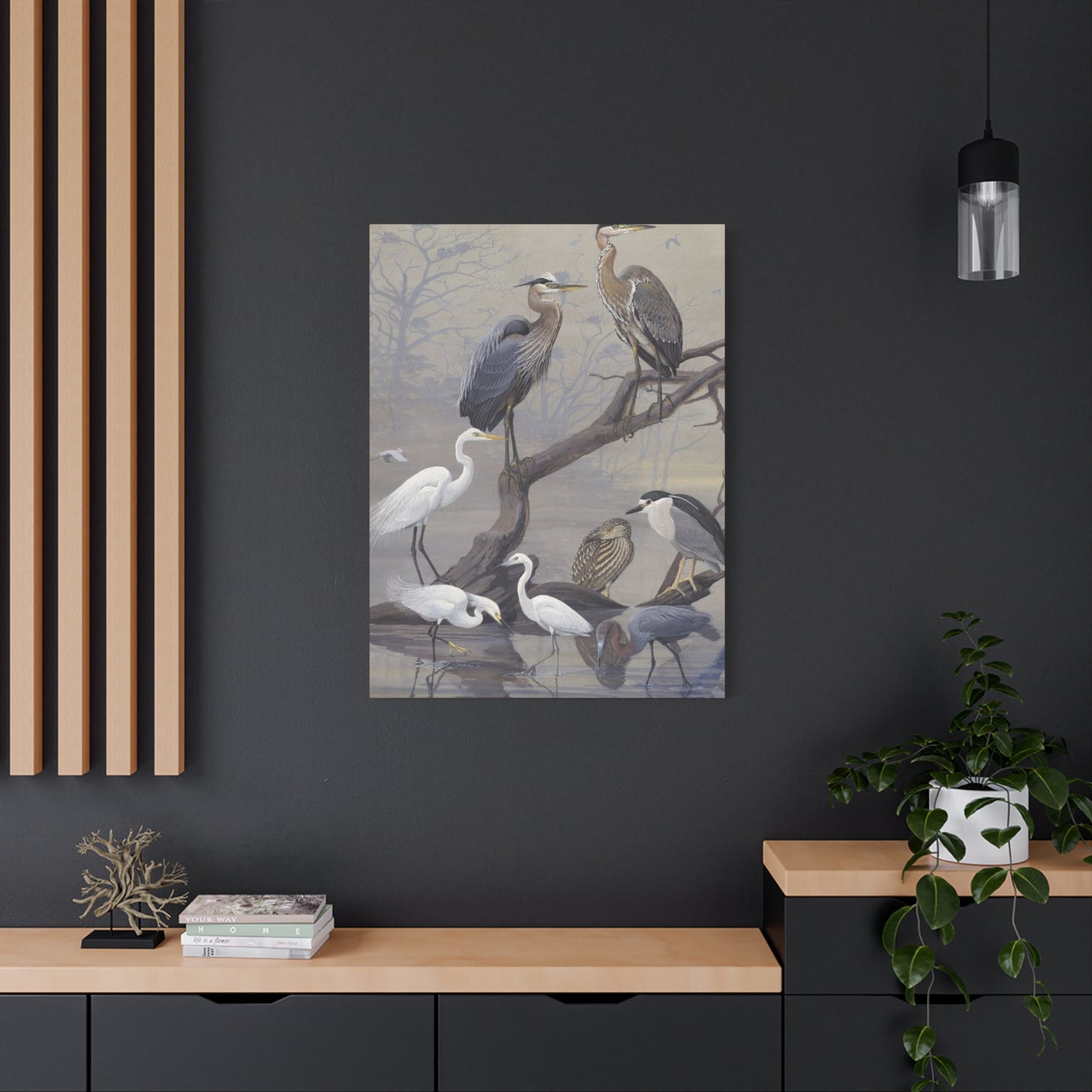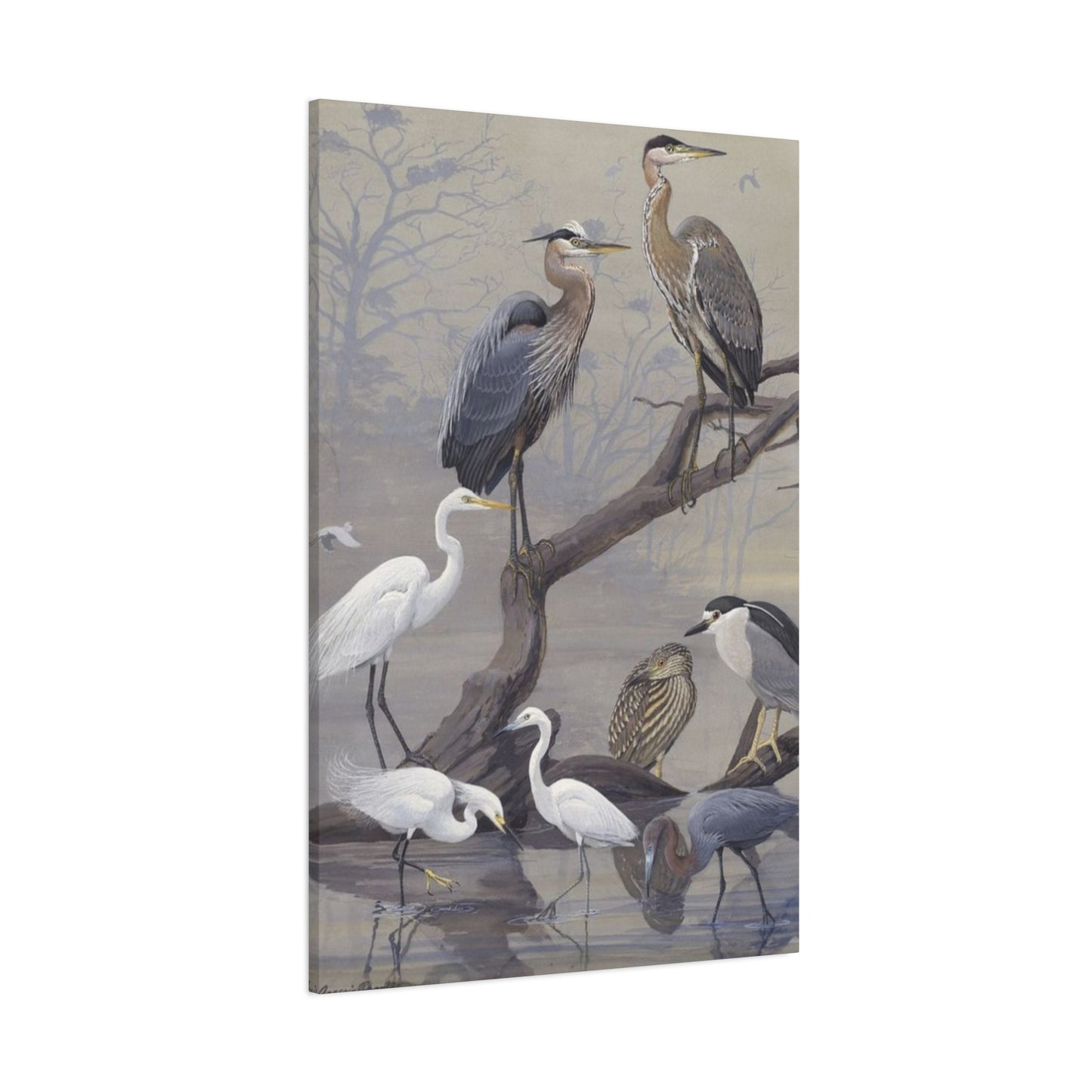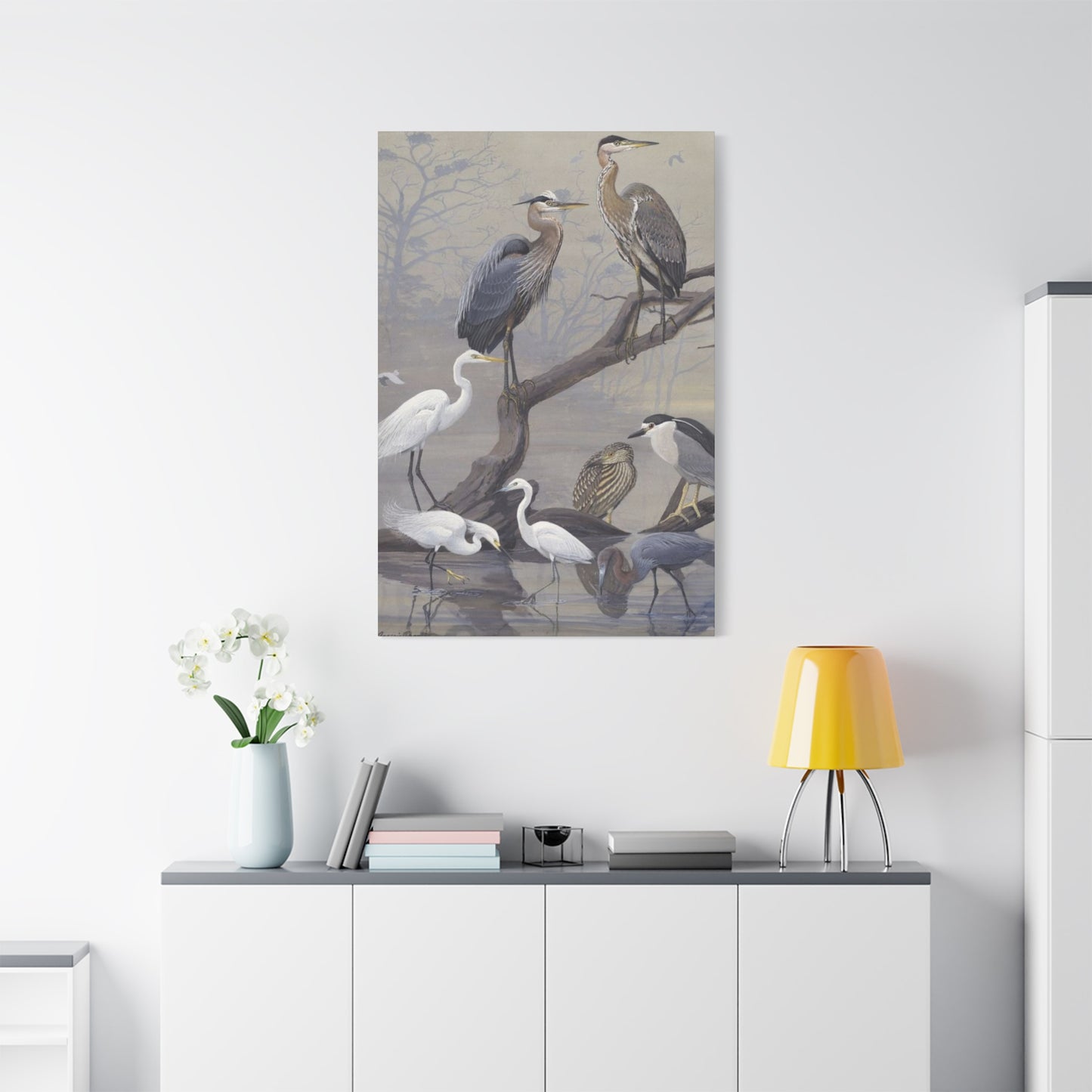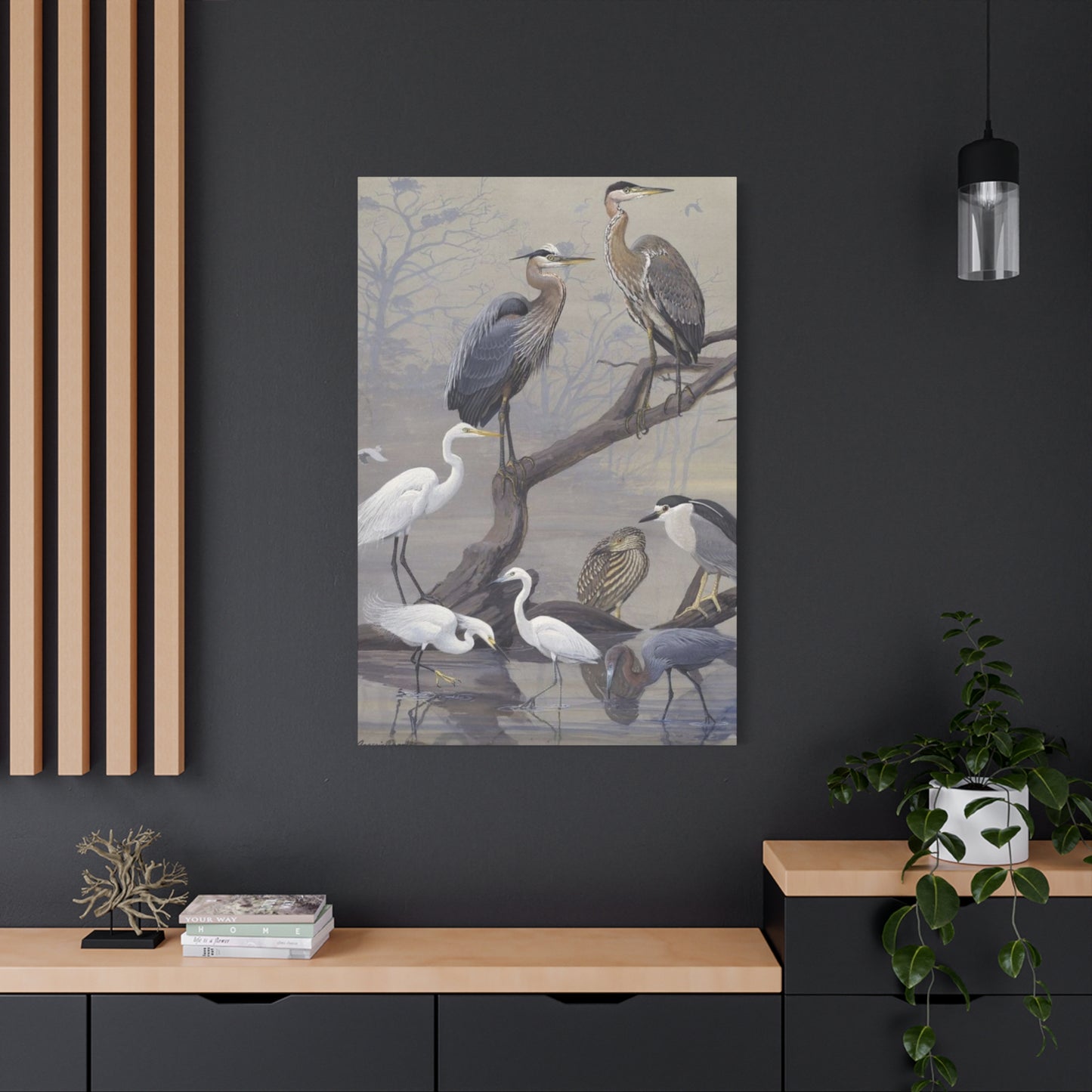Graceful Heron Wall Art: Bringing Natural Elegance to Your Living Environment
The majestic heron has captivated artists and nature enthusiasts for centuries with its elegant silhouette and serene presence. These magnificent birds embody tranquility, patience, and natural grace, making heron wall art an exceptional choice for those seeking to infuse their living environments with peaceful energy and sophisticated beauty. From watercolor masterpieces to bold contemporary interpretations, heron artwork offers endless possibilities for creating stunning visual displays that transform ordinary rooms into sanctuaries of calm.
The appeal of heron wall art extends far beyond mere decoration. These pieces serve as windows to the natural world, bringing the essence of wetlands, marshes, and serene waterways into our homes. Whether rendered in soft pastels that whisper of dawn over still waters or bold strokes that capture the bird's commanding presence, heron artwork possesses an inherent ability to create focal points that draw the eye while soothing the soul.
Contemporary artists have embraced the heron's timeless appeal, creating works that range from photorealistic representations to abstract interpretations that capture the bird's essence through color and form. This diversity ensures that there is heron wall art suitable for every aesthetic preference, from traditional to ultramodern, rustic to refined. The key lies in understanding how these pieces can complement and enhance existing decor while creating the desired atmospheric effect.
Magnificent Heron Artwork for Serene Living Areas
The selection of heron artwork for peaceful living areas requires careful consideration of both aesthetic elements and the emotional response these pieces evoke. Herons, with their statuesque poses and contemplative nature, naturally lend themselves to creating environments that promote relaxation and introspection. When choosing heron wall art for serene living areas, consider pieces that emphasize the bird's graceful neck curves, delicate plumage details, and the quiet intensity of their hunting stance.
Watercolor heron paintings excel in peaceful settings, their soft edges and flowing pigments creating a sense of movement and life without overwhelming the viewer. These pieces often feature muted color palettes that blend seamlessly with neutral decor schemes while adding subtle visual interest. The translucent quality of watercolor allows light to play across the surface, creating a dynamic viewing experience that changes throughout the day as natural lighting shifts.
Oil paintings offer a different dimension to heron wall art, providing rich textures and deep color saturation that can serve as powerful focal points. These works often capture the heron's environment in greater detail, including the reflective surfaces of water, the texture of reeds and marsh grasses, and the subtle interplay of light and shadow that characterizes the bird's natural habitat. Such comprehensive scenes can transport viewers to tranquil wetland environments, promoting a sense of escape from daily stressors.
Acrylic heron paintings provide versatility in both style and presentation, capable of achieving both photorealistic detail and bold, expressive interpretations. The medium's quick-drying properties allow artists to build layers of color and texture that can create stunning visual depth. Contemporary acrylic heron pieces often incorporate mixed media elements, adding textural interest through the inclusion of natural materials or metallic accents that catch and reflect light.
The positioning of heron wall art within living areas significantly impacts its effectiveness in creating a peaceful atmosphere. Placing these pieces at eye level ensures comfortable viewing while walking through the room, while larger works positioned above seating areas create focal points that naturally draw conversation and contemplation. The interplay between the artwork and surrounding elements such as furniture placement, lighting, and complementary decor items contributes to the overall sense of harmony and tranquility.
Selecting Appropriate Heron Artwork for Your Living Environment
The process of selecting heron wall art requires a thoughtful assessment of both the physical characteristics of your living environment and the emotional atmosphere you wish to create. Room size, ceiling height, natural light availability, and existing color schemes all play crucial roles in determining which heron artwork will be most effective in your particular setting. Understanding these factors enables you to make informed decisions that result in cohesive, visually appealing arrangements that enhance rather than compete with your existing decor.
Color harmony represents one of the most critical considerations when selecting heron wall art. The natural coloration of herons provides a versatile palette ranging from soft grays and whites to deeper slate blues and charcoal tones. These neutral tones offer excellent compatibility with a wide range of decorating schemes, from monochromatic arrangements to more complex color combinations. Consider how the colors in your chosen heron artwork will interact with wall colors, furniture upholstery, and accent pieces to ensure a harmonious overall effect.
Scale and proportion must be carefully evaluated to achieve visual balance within your living environment. A single large heron painting can serve as a dramatic focal point in spacious rooms with high ceilings, while smaller pieces work better in intimate settings where oversized artwork might feel overwhelming. The relationship between the artwork and surrounding furniture is equally important, with the scale of seating, tables, and other elements helping to determine the appropriate size for heron wall art pieces.
Style consistency throughout your living environment ensures a cohesive aesthetic that feels intentional rather than haphazard. If your decor leans toward traditional styling, realistic heron paintings with classical framing complement existing elements beautifully. Modern environments benefit from more contemporary interpretations of heron subjects, perhaps featuring simplified forms, bold color choices, or innovative presentation methods that align with current design trends.
The artistic medium chosen for heron wall art significantly impacts both the visual effect and the maintenance requirements of your selection. Photographic prints offer crisp detail and vibrant colors but may lack the textural interest of painted works. Original paintings provide unique character and investment value but require more careful consideration of lighting and environmental factors to ensure longevity. Limited edition prints offer a middle ground, providing artistic quality at more accessible price points while maintaining exclusivity.
Lighting considerations play a crucial role in the successful integration of heron wall art into your living environment. Natural lighting patterns change throughout the day, affecting how colors appear and how textures catch the light. Artificial lighting systems should complement rather than compete with the artwork, with warm white LED options often providing the most flattering illumination for most heron wall art pieces. Consider installing picture lights or adjusting existing lighting fixtures to highlight your chosen artwork effectively.
Cultural Significance and Meaning of Herons in Artistic Expression
Throughout history, herons have held profound symbolic meaning across diverse cultures, making heron wall art rich with interpretive possibilities that extend far beyond mere aesthetic appeal. In many Eastern traditions, herons represent patience, wisdom, and the ability to stand still in moving waters, metaphorically speaking to the human capacity for finding stability amid life's constant changes. These cultural associations infuse heron artwork with deeper meaning, transforming decorative pieces into symbols of personal growth and spiritual development.
Ancient Egyptian civilization revered herons as sacred birds associated with renewal and rebirth, often depicting them in tomb paintings and religious artwork. The bird's association with the flooding of the Nile, which brought fertile soil for new growth, established the heron as a symbol of cyclical renewal and natural abundance. Modern heron wall art draws upon these ancient associations, offering viewers connection to timeless themes of regeneration and natural cycles.
Japanese artistic traditions have long celebrated the heron's elegant form and patient hunting style, incorporating these magnificent birds into everything from traditional scroll paintings to contemporary prints. The Japanese aesthetic principle of finding beauty in simplicity aligns perfectly with the heron's understated elegance, making these birds natural subjects for artwork that emphasizes clean lines, negative background areas, and subtle color variations. This cultural influence can be seen in contemporary minimalist heron wall art that emphasizes form and gesture over detailed representation.
Native American cultures often viewed herons as symbols of self-reliance and determination, qualities that resonate with individuals seeking to create environments that support personal strength and independence. The bird's solitary hunting style and patient approach to securing sustenance translate into powerful metaphors for persistence and self-sufficiency. Heron wall art drawing upon these cultural traditions often features the bird in natural settings that emphasize its connection to the environment and its role as a patient observer.
Celtic mythology associated herons with otherworldly knowledge and the ability to move between different realms of existence. This mystical quality makes heron wall art particularly appealing to those drawn to spiritual themes or seeking to create environments that support meditation and introspection. Contemporary artists often capture this ethereal quality through the use of soft edges, dreamlike color palettes, and compositions that suggest movement between the earthly and spiritual realms.
The symbolism of herons in Christian tradition focuses on the bird's vigilant nature and its association with prayer and contemplation. Medieval bestiaries described herons as creatures that remained alert even while resting, making them symbols of spiritual watchfulness. Modern heron wall art can draw upon this tradition through compositions that emphasize the bird's alert posture and intense gaze, creating pieces that inspire contemplation and mindful awareness.
Tranquility and Elegance Through Heron-Themed Decor
The integration of heron-themed wall art into living environments creates opportunities for establishing atmospheres of profound tranquility and refined elegance. These magnificent birds possess an inherent grace that translates beautifully into decorative applications, their serene presence capable of transforming ordinary rooms into havens of peace and sophisticated beauty. The key to successful heron-themed decor lies in understanding how these elements work together to create cohesive environments that support relaxation and aesthetic appreciation.
Heron wall art serves as an anchor point for developing broader decorative themes that celebrate natural beauty and quiet sophistication. The muted color palettes typically associated with these birds provide excellent foundations for decorating schemes that prioritize calm over stimulation. Soft grays, gentle blues, warm whites, and subtle earth tones create harmonious backdrops that allow heron artwork to take center stage while contributing to overall environmental tranquility.
The elegant silhouette of herons lends itself particularly well to creating visual rhythm and flow within decorated environments. Multiple heron pieces can be arranged to create movement that guides the eye through a room, establishing sightlines that enhance the overall sense of harmony and purpose. This approach works especially well in larger areas where single pieces might feel isolated or insufficient to create the desired decorative impact.
Texture plays a crucial role in heron-themed decor, with the opportunity to incorporate materials that echo the bird's natural environment. Natural fibers, weathered wood finishes, stone accents, and metallic elements reminiscent of water surfaces all contribute to creating authentic connections between heron wall art and supporting decorative elements. These textural relationships help establish environments that feel organic and naturally evolved rather than artificially constructed.
Lighting design becomes particularly important when working with heron-themed decor, as these birds are often most active during the golden hours of dawn and dusk. Warm lighting that mimics these natural conditions enhances the appeal of heron wall art while contributing to the overall sense of tranquility. Layered lighting approaches that combine ambient, task, and accent lighting create flexibility in how heron artwork is presented throughout different times of day and various activities.
The incorporation of living elements such as plants and water features can significantly enhance heron-themed decorative schemes. Tall grasses in planters echo the marsh environments where herons thrive, while water features provide the gentle sounds associated with the bird's natural habitat. These living elements create dynamic relationships with static heron wall art, bringing movement and life to decorative arrangements while maintaining the peaceful atmosphere these birds represent.
Optimal Color Schemes for Heron-Inspired Artwork
The development of successful color schemes for heron-inspired wall art requires understanding both the natural coloration of these magnificent birds and the psychological effects of different color combinations on human perception and emotional response. Herons offer artists a sophisticated palette ranging from soft whites and pale grays to deeper charcoal tones and subtle blue-gray variations, providing excellent foundations for creating harmonious color relationships that enhance rather than compete with existing decor elements.
Monochromatic color schemes built around the heron's natural gray-scale coloration create sophisticated, calming environments that emphasize form and texture over chromatic intensity. These approaches work particularly well in contemporary settings where simplicity and refinement are valued over bold color statements. Variations in tone and saturation within the gray family provide visual interest while maintaining overall harmony, allowing viewers to appreciate subtle differences in shading and texture that might be lost in more colorful presentations.
Cool color palettes incorporating blues, blue-grays, and blue-greens naturally complement heron subjects while evoking the aquatic environments these birds inhabit. These color families promote feelings of calm and serenity, making them ideal choices for bedrooms, meditation areas, and other environments designed for relaxation. The addition of warm white accents prevents cool color schemes from feeling too austere while maintaining the overall sense of tranquility.
Warm neutral palettes featuring beiges, soft browns, and cream tones create inviting environments that highlight the heron's elegant form against backgrounds that suggest natural materials and organic textures. These color combinations work exceptionally well in traditional decorating schemes where comfort and familiarity are priorities. The earthiness of warm neutrals provides grounding for heron wall art while allowing the bird's natural grace to remain the focal point.
Complementary color schemes that pair cool heron tones with warm accent colors create dynamic visual relationships that energize without overwhelming. Subtle touches of golden yellow or soft coral can provide just enough warmth to prevent cool-dominated heron artwork from feeling too stark, while maintaining the overall sense of sophistication these birds represent. The key lies in using warm accents sparingly, allowing them to enhance rather than compete with the primary cool palette.
Analogous color schemes that combine neighboring colors on the color wheel create smooth transitions that feel natural and unforced. For heron wall art, this might involve combining blue-grays with pure grays and gray-greens, creating subtle variations that add visual interest without disrupting overall harmony. These approaches work well in environments where gentle stimulation is preferred over bold contrast, supporting the contemplative qualities associated with heron symbolism.
Professional Framing Strategies for Heron Wall Art
The selection and application of appropriate framing techniques can dramatically impact the effectiveness of heron wall art in achieving desired aesthetic and emotional effects. Professional framing goes beyond simple protection of artwork to become an integral part of the overall visual presentation, with frame selection, matting choices, and mounting techniques all contributing to the final impact of heron pieces within decorated environments.
Traditional framing approaches for heron wall art often emphasize the classical elegance these birds represent through the use of refined materials and proportions that complement rather than compete with the subject matter. Wooden frames in natural finishes such as walnut, oak, or cherry provide warmth and substance that anchor heron artwork within traditional decorating schemes. The grain patterns and color variations in natural wood create subtle visual interest that enhances without overwhelming the central subject.
Contemporary framing solutions for heron wall art prioritize clean lines and minimal visual interference with the artwork itself. Sleek metal frames in brushed silver, matte black, or warm bronze finishes provide sophisticated presentations that work well in modern environments. These frames often feature narrow profiles that maximize the visible artwork area while providing necessary protection and structural support. The choice of metal finish should harmonize with existing hardware and fixtures within the room to maintain decorative consistency.
Matting selection plays a crucial role in the successful presentation of heron wall art, providing visual breathing room around the subject while creating opportunities to enhance color relationships and compositional balance. Neutral mats in cream, warm white, or soft gray provide safe choices that work with virtually any heron artwork, while subtly colored mats can pick up accent tones from the piece to create more dynamic presentations. The width of matting should be proportional to both the artwork size and the viewing distance, with larger rooms often benefiting from wider mats that provide greater visual presence.
Float mounting techniques can create stunning presentations for heron wall art, particularly when working with pieces on quality paper or canvas. This approach allows the natural edges of the artwork to show, creating an illusion that the piece is floating within the frame. Float mounting works exceptionally well with watercolor heron paintings where the organic edge quality adds to the overall aesthetic appeal of the presentation.
Custom framing solutions offer opportunities to create unique presentations that perfectly complement both the heron artwork and the intended display environment. This might involve combining multiple frame elements, incorporating specialty materials, or developing unconventional proportions that serve specific compositional goals. Custom approaches require careful planning and professional execution but can result in presentations that elevate heron wall art from mere decoration to significant design elements.
Conservation framing techniques become important when working with valuable or irreplaceable heron artwork, employing materials and methods that protect pieces from environmental damage while maintaining optimal presentation quality. UV-filtering glazing protects artwork from light damage, while acid-free materials prevent chemical interactions that could cause deterioration over time. These approaches ensure that heron wall art retains its beauty and value for generations while providing immediate visual satisfaction.
Heron Artwork in Nature-Focused Living Environments
The incorporation of heron wall art into nature-focused living environments creates opportunities for developing cohesive decorative themes that celebrate the natural world while providing sophisticated visual anchors for room arrangements. These magnificent birds serve as perfect subjects for connecting indoor environments with the outdoor world, their elegant forms and associations with pristine natural habitats making them ideal choices for those seeking to bring elements of the wilderness into their homes.
Biophilic design principles strongly support the use of heron wall art in creating environments that promote human well-being through connections with nature. Research consistently demonstrates that exposure to natural imagery, particularly representations of wildlife in their native habitats, can reduce stress, improve mood, and enhance cognitive function. Heron artwork contributes to these benefits while providing aesthetic pleasure and serving as conversation starters that deepen appreciation for the natural world.
The integration of heron wall art with other nature-themed decorative elements creates layered environments that feel authentic and purposeful rather than artificially constructed. Natural materials such as reclaimed wood, stone, and organic textiles provide appropriate backdrops for heron artwork while contributing to overall environmental themes. The key lies in creating relationships between different elements that feel organic rather than forced, allowing each component to contribute to the overall effect while maintaining individual identity.
Plant selections for nature-focused environments featuring heron wall art should consider both aesthetic compatibility and symbolic relationships with the birds' natural habitats. Tall grasses, ferns, and other wetland plants create authentic connections while providing living elements that change and evolve over time. These botanical additions bring movement and life to arrangements while creating dynamic relationships with static heron artwork.
Water features, whether large installations or small tabletop fountains, enhance nature-focused environments by providing the gentle sounds associated with heron habitats while contributing visual and auditory elements that promote relaxation. The movement of water creates changing light patterns that can interact beautifully with heron wall art, particularly pieces that incorporate reflective elements or capture the play of light on water surfaces.
Natural lighting strategies become particularly important in nature-focused environments, as they affect how both heron artwork and supporting elements are perceived throughout the day. Large windows that provide views of outdoor environments create seamless transitions between indoor and outdoor experiences, while the changing quality of natural light throughout the day adds dynamic elements to static decorative arrangements. Supplemental lighting should support rather than compete with natural illumination patterns.
Heron Wall Art for Waterfront and Lakeside Properties
Waterfront and lakeside properties provide ideal settings for heron wall art, offering natural connections between indoor decorative choices and outdoor environmental realities. These locations often feature expansive windows and outdoor viewing areas where herons can actually be observed in their natural habitat, creating unique opportunities for blending artistic representation with direct wildlife observation. The challenge lies in selecting and presenting heron artwork that complements rather than competes with these spectacular natural views.
The color palettes typically found in waterfront environments provide excellent foundations for heron wall art selections, with the natural blues, grays, and whites of water and sky creating harmonious backdrops for artwork featuring these elegant birds. The changing quality of light reflected from water surfaces throughout the day adds dynamic elements to heron wall art presentations, with colors and textures appearing different under various lighting conditions. This natural variation keeps artwork interesting and prevents static presentations from becoming monotonous.
Scale considerations become particularly important in waterfront properties where rooms often feature high ceilings and expansive floor plans designed to accommodate large windows and outdoor views. Heron wall art in these settings needs sufficient size and visual presence to hold its own against dramatic natural backdrops while avoiding overwhelming smaller, more intimate seating areas. The solution often involves carefully planned arrangements that create multiple focal points at different scales throughout larger areas.
Weather resistance becomes a crucial factor when selecting heron wall art for waterfront properties, particularly in areas where humidity levels fluctuate significantly due to seasonal changes and weather patterns. Proper framing with moisture barriers, UV protection, and adequate ventilation helps ensure that artwork maintains its beauty despite challenging environmental conditions. Professional conservation framing techniques become investments in longevity rather than luxury upgrades in these demanding environments.
The integration of heron wall art with nautical and maritime decorative themes requires careful balance to avoid cliché while creating authentic connections between different design elements. Subtle nautical references through rope textures, weathered wood finishes, and maritime hardware can enhance heron artwork without overwhelming the natural elegance these birds represent. The goal is to create environments that feel authentically connected to waterfront living rather than artificially themed.
Outdoor display considerations for covered porches, screened areas, and other protected exterior locations expand the possibilities for incorporating heron wall art throughout waterfront properties. Weather-resistant materials and specialized framing techniques enable the placement of heron artwork in transitional zones between indoor and outdoor living areas, creating seamless visual flow that enhances the overall connection between built and natural environments.
Contemporary Minimalist Heron Artwork
The minimalist aesthetic movement has embraced heron subjects with particular enthusiasm, finding in these elegant birds perfect subjects for exploring themes of simplicity, balance, and the power of suggestion over detailed representation. Contemporary minimalist heron wall art strips away extraneous details to focus on essential forms, creating pieces that achieve maximum impact through careful attention to line, proportion, and negative area rather than complex rendering or ornate presentation.
Line quality becomes paramount in minimalist heron artwork, with artists employing confident strokes that capture the bird's essential character through economy of means rather than exhaustive detail. The graceful curve of a heron's neck, the angular geometry of bent legs, and the sharp precision of the hunting stance all provide rich material for minimalist interpretation. These simplified forms create powerful visual statements that work exceptionally well in contemporary environments where visual clutter is minimized in favor of careful curation.
Negative area plays a crucial role in minimalist heron wall art, with unmarked portions of the composition becoming active participants in the overall design rather than empty backdrops. The relationship between the depicted bird and surrounding emptiness creates dynamic tension that draws viewer attention while promoting contemplation. This approach aligns perfectly with the meditative qualities associated with heron symbolism while meeting the aesthetic requirements of contemporary minimalist environments.
Color reduction in minimalist heron artwork often involves working within severely limited palettes, sometimes employing only black and white or subtle variations within a single color family. These restrictions force artists to rely on form, composition, and gesture to communicate rather than chromatic variety, resulting in pieces that possess remarkable visual strength despite their apparent simplicity. The reduced color approach works exceptionally well in contemporary environments where neutral color schemes predominate.
Material choices for minimalist heron wall art often emphasize the inherent qualities of the chosen medium rather than attempting to disguise or transform them. Charcoal drawings celebrate the material's inherent texture and value range, while ink paintings exploit the medium's capacity for both precise lines and atmospheric washes. This honest approach to materials aligns with broader minimalist principles while creating artwork that feels authentic and uncontrived.
Scale relationships in minimalist heron artwork require careful consideration, as the reduced visual information must maintain appropriate presence within intended display environments. Larger scales can provide dramatic impact through the power of simplified forms, while smaller pieces rely on intimate viewing distances to reveal subtle details and surface qualities. The key lies in matching scale to intended viewing conditions and surrounding environmental factors.
Comparing Abstract and Photorealistic Heron Artwork
The choice between abstract and photorealistic approaches to heron wall art involves fundamental decisions about aesthetic goals, environmental compatibility, and personal preferences regarding how art should function within living environments. Both approaches offer distinct advantages and create different types of viewer engagement, making the selection process an important consideration in developing successful decorative schemes featuring these magnificent birds.
Photorealistic heron artwork emphasizes technical mastery and detailed observation, creating pieces that celebrate the intricate beauty of these birds through careful attention to feather patterns, anatomical accuracy, and environmental context. This approach appeals to viewers who appreciate craftsmanship and find satisfaction in recognizing familiar subjects rendered with exceptional skill. Photorealistic pieces often work well as focal points in traditional decorating schemes where representational art is valued over more experimental approaches.
The level of detail in photorealistic heron artwork can create immersive viewing experiences that transport observers to the bird's natural habitat, promoting appreciation for wildlife while providing escapist qualities that support relaxation and stress reduction. These pieces often include environmental elements such as water reflections, marsh vegetation, and atmospheric effects that enhance the overall sense of place and ecological context.
Abstract heron artwork prioritizes emotional and aesthetic impact over literal representation, using color, form, and gesture to capture the essence of these magnificent birds rather than their surface appearance. This approach often results in pieces that possess greater visual versatility, working effectively in a wider range of decorative contexts due to their reduced specificity and increased interpretive flexibility.
The emotional directness of abstract heron artwork can create powerful responses that bypass intellectual analysis in favor of immediate aesthetic and emotional engagement. Colors can be heightened beyond natural ranges, forms can be simplified or exaggerated for emphasis, and compositions can explore relationships that would be impossible in realistic renderings. This freedom allows artists to emphasize particular qualities such as grace, power, or serenity through purely visual means.
Contemporary abstract interpretations of heron subjects often incorporate mixed media elements, textural variations, and experimental techniques that add visual interest and create unique surface qualities. These approaches can result in artwork that changes appearance under different lighting conditions or viewing angles, maintaining viewer interest over extended periods while avoiding the potential monotony of static representations.
The compatibility of abstract versus realistic heron artwork with different decorative styles varies significantly, with contemporary environments often favoring abstract interpretations while traditional settings typically support realistic approaches. However, these guidelines are not absolute, and successful combinations can be achieved through careful attention to color relationships, scale proportions, and overall compositional balance regardless of the artistic approach employed.
Incorporating Heron Artwork in Calming Environments
The creation of calming environments through the strategic placement and selection of heron wall art requires understanding both the psychological effects of visual stimuli and the symbolic associations these magnificent birds carry across different cultural contexts. Herons naturally embody qualities of patience, stillness, and quiet observation that align perfectly with human needs for restful, contemplative areas within busy modern lifestyles.
Color psychology plays a fundamental role in using heron wall art to create calming environments, with the natural color palette of these birds providing excellent foundations for soothing decorative schemes. The soft grays, gentle blues, and pure whites typically associated with herons promote feelings of peace and serenity while avoiding the stimulating effects of more intense color choices. These neutral tones create visual rest areas that allow the mind to relax while providing sufficient visual interest to prevent environments from feeling stark or unwelcoming.
The positioning of heron wall art within calming environments requires consideration of sight lines, viewing distances, and the relationship between artwork and seating arrangements designed for relaxation. Pieces placed at comfortable viewing heights for seated observers create intimate connections that support extended contemplation, while artwork positioned to be visible from multiple locations within a room provides consistent visual anchors that reinforce the peaceful atmosphere throughout the area.
Lighting considerations become particularly important when using heron wall art to create calming environments, as harsh or inconsistent illumination can undermine the serene qualities these pieces are intended to promote. Soft, warm lighting that mimics the golden hours when herons are most active creates optimal conditions for appreciating artwork while supporting relaxation. Dimmable fixtures provide flexibility in adjusting light levels to match different activities and times of day.
The integration of heron wall art with other calming elements such as comfortable seating, soft textiles, and natural materials creates comprehensive environments that support both physical and psychological relaxation. Natural fiber rugs, organic cotton upholstery, and wooden furniture pieces provide tactile experiences that complement the visual serenity of heron artwork while reinforcing connections to the natural world.
Sound considerations in calming environments can enhance the effectiveness of heron wall art through the inclusion of gentle water features, soft background music, or the careful management of acoustic properties to minimize disruptive noise. The natural association of herons with quiet waterside environments makes these birds particularly appropriate for areas where sound quality is managed to promote relaxation and contemplation.
Heron Artwork for Bedrooms and Meditation Areas
The selection and placement of heron wall art in bedrooms and meditation areas requires special consideration of the unique psychological and functional requirements of these private, restorative environments. These locations serve as retreats from daily stressors and demand visual elements that support rather than stimulate, promote rest rather than excitement, and encourage introspection rather than external focus. Herons, with their associations with patience, stillness, and quiet observation, provide ideal subjects for these intimate settings.
Bedroom applications of heron wall art benefit from pieces that emphasize the bird's serene qualities rather than its hunting intensity or alert vigilance. Soft watercolor renderings that capture herons in restful poses create appropriate visual anchors for sleeping areas, while avoiding imagery that might prove too stimulating or attention-grabbing when rest is the primary goal. The placement of such pieces where they can be viewed from the bed without dominating the visual field supports their function as sources of calm contemplation.
Color selection for bedroom heron artwork should prioritize soothing tones that complement rather than compete with the restorative function of these environments. Gentle blues that evoke peaceful waters, soft grays that suggest morning mist, and warm whites that capture the bird's elegant plumage all provide appropriate choices for bedroom applications. These subdued palettes create visual harmony that supports sleep quality while maintaining sufficient interest for daytime viewing.
Meditation area applications of heron wall art can embrace the bird's symbolic associations with patience and mindful observation, qualities that directly support contemplative practices. Pieces that capture herons in their characteristic still-hunting pose provide visual metaphors for the meditative state, encouraging practitioners to embody similar qualities of alert stillness and focused attention. The positioning of such artwork at eye level for seated meditation creates direct visual connections that can enhance practice sessions.
The scale of heron artwork in meditation areas should be appropriate for intimate viewing without becoming overwhelming or distracting from inner-focused activities. Medium-sized pieces that provide sufficient detail for contemplation while maintaining manageable visual presence often work best in these applications. The goal is to create supportive visual anchors rather than commanding focal points that might interfere with meditative concentration.
Lighting in bedrooms and meditation areas featuring heron wall art requires careful attention to both functional needs and atmospheric goals. Adjustable lighting systems that can provide bright illumination for daily activities while dimming to soft accent levels for rest and meditation offer optimal flexibility. The ability to highlight heron artwork during active periods while reducing visual stimulation during rest creates environments that adapt to changing needs throughout the day.
Sourcing Premium Heron Wall Art
The acquisition of high-quality heron wall art requires knowledge of various sources, quality indicators, and market factors that influence both immediate satisfaction and long-term value retention. Understanding these elements enables informed purchasing decisions that result in artwork selections that provide lasting beauty and appropriate investment characteristics for different budgetary considerations and aesthetic requirements.
Gallery sources for heron wall art often provide access to original works by established artists, offering unique pieces that cannot be duplicated while providing investment potential through artistic reputation and rarity. Gallery relationships also provide access to expert advice regarding selection, framing, and care, adding value beyond the artwork itself. The premium pricing typical of gallery sources reflects these additional services and the exclusivity of original works.
Art fair participation provides opportunities to view works from multiple artists in single venues while enabling direct artist interaction and potentially more favorable pricing than gallery purchases. These events often feature both established and emerging artists, creating possibilities for discovering new talent while building collections. The temporary nature of art fairs requires quick decision-making but can result in acquiring pieces before they become more widely recognized and expensive.
Online marketplaces have revolutionized access to heron wall art by connecting buyers with artists and dealers worldwide while providing extensive selection and competitive pricing. However, online purchases require careful attention to image quality, artist credentials, and return policies due to the inability to examine pieces directly before purchase. Reputable online sources provide detailed condition reports and satisfaction guarantees that minimize purchase risks.
Artist studio visits offer intimate access to creative processes while enabling custom commissions tailored to specific requirements. Direct artist relationships can result in pieces perfectly suited to intended environments while supporting artists through full-price purchases that bypass dealer markups. These relationships often provide ongoing access to new works and the possibility of building coherent collections over time.
Limited edition prints provide access to high-quality reproductions of popular heron artwork at more accessible price points than original works. Quality indicators include edition size, printing methods, paper quality, and artist involvement in the production process. Hand-signed limited editions often retain better value than unsigned reproductions while providing affordability compared to original pieces.
Auction sources can provide access to both contemporary and vintage heron artwork, sometimes at prices below current market levels. However, auction purchases require expertise in condition assessment and market valuation to avoid overpaying or acquiring pieces with hidden problems. Professional preview opportunities and condition reports help inform bidding decisions while establishing maximum bid levels prevents emotional overspending.
Combining Heron Art with Plant-Themed Artwork
The combination of heron wall art with botanical and plant-themed artwork creates rich, layered environments that celebrate the interconnectedness of natural ecosystems while providing varied visual interest that supports extended viewing pleasure. These combinations require careful attention to compositional balance, color harmony, and thematic coherence to achieve successful results that feel intentional rather than haphazard.
Wetland plant themes provide natural companions for heron artwork, creating authentic ecological relationships that enhance the believability and educational value of artistic arrangements. Cattails, water lilies, marsh grasses, and other aquatic vegetation appear frequently in heron habitats, making their inclusion in related artwork both logical and visually harmonious. These botanical elements can frame heron subjects or appear in separate pieces that share wall areas.
Seasonal plant combinations with heron artwork can create dynamic arrangements that change focus throughout the year while maintaining overall thematic coherence. Spring flowering plants might emphasize renewal themes that complement heron associations with new growth, while autumn foliage can highlight the cyclical nature of natural processes. These seasonal rotations keep arrangements fresh while providing opportunities for exploring different aspects of natural beauty.
Color coordination between heron and plant-themed artwork requires attention to both natural color relationships and intended atmospheric effects. The neutral tones typical of heron subjects provide excellent backdrops for more colorful botanical subjects, while plant artwork can pick up accent colors from heron pieces to create unified schemes. The balance between dominant neutral tones and colorful accents determines the overall energy level of combined arrangements.
Scale relationships between heron and plant artwork affect both individual piece impact and overall compositional balance. Large heron pieces might be balanced by groupings of smaller botanical works, while collections of medium-sized pieces from both categories can create gallery walls that provide varied viewing experiences. The key lies in creating visual weight distributions that feel stable and purposeful rather than accidentally assembled.
Textural variety between different artistic media and subject matters adds tactile interest to combined arrangements while preventing monotony in viewing experiences. Smooth watercolor techniques might be contrasted with more textured oil paintings, or photographic prints might be combined with pen-and-ink drawings to create varied surface qualities that invite closer inspection. These textural relationships add depth to viewing experiences while maintaining thematic unity.
Frame coordination between heron and plant-themed artwork helps unify diverse pieces while allowing individual character to show through. Consistent frame styles create strong connections between different subjects, while varied framing can emphasize individual piece qualities within cohesive color schemes. The choice depends on whether emphasis should be placed on unity or variety within the combined arrangement.
Conclusion
Graceful heron wall art offers a stunning way to infuse your living environment with the natural elegance and serene beauty of these magnificent birds. Known for their poised stature and tranquil presence, herons embody a perfect blend of grace and strength—qualities that translate beautifully into captivating artwork. Incorporating heron-themed art into your home decor not only enhances your space visually but also brings a calming, reflective atmosphere inspired by nature’s quiet moments.
The artistry behind heron wall art captures the bird’s slender form, delicate feathers, and fluid movement, often set against serene natural backgrounds like marshes, lakes, or rivers. This creates a soothing aesthetic that complements a variety of interior design styles, from coastal and rustic to modern and minimalist. The subtle, often muted color palettes typically employed in these works further enhance their calming influence, making them ideal for living rooms, bedrooms, or meditation spaces where relaxation and balance are desired.
Beyond their visual appeal, herons carry rich symbolism. They are often associated with patience, grace, resilience, and adaptability—qualities that resonate deeply in today’s fast-paced world. Displaying heron art in your home serves as a gentle reminder to embrace these virtues, promoting mindfulness and tranquility amidst daily life’s challenges. This emotional depth adds meaningful context to the artwork, elevating it from mere decoration to a source of inspiration.
Heron wall art also offers great versatility in presentation. Whether you choose a large, statement canvas as a focal point or a series of smaller prints arranged as a gallery wall, these pieces bring elegance and harmony to any room. Their natural themes pair beautifully with organic materials like wood, stone, and linen, allowing you to create a cohesive and inviting environment that feels connected to the outdoors.
In conclusion, graceful heron wall art is an exquisite choice for bringing natural elegance into your living environment. It combines aesthetic beauty with symbolic richness, helping you craft a space that is both visually stunning and emotionally nurturing. By adding heron-inspired art to your decor, you invite a sense of calm, grace, and timeless charm that enriches your home and your everyday life.

















